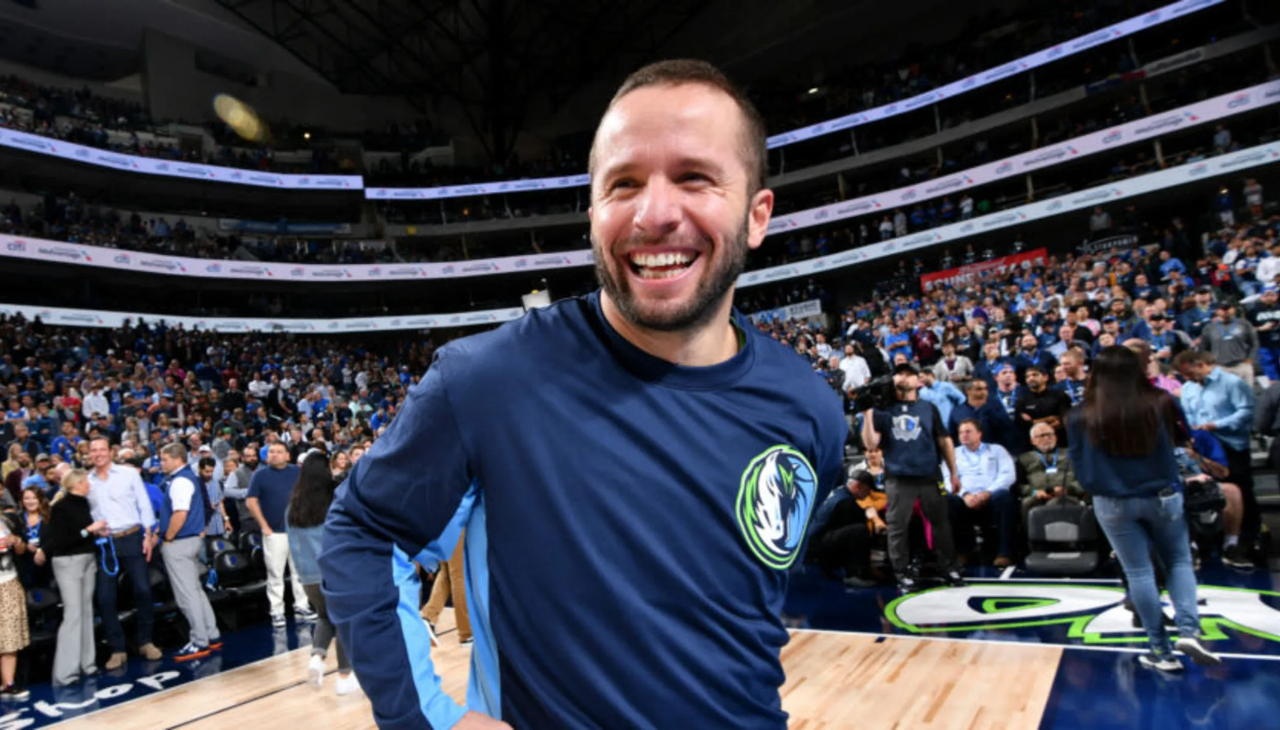
The Women Who Made Cesar Chavez
Cesar Chavez is an American icon, but to say his movement was all him ignores the women who made it possible.
Cesar Chavez’s birthday is a week and a day from today. Were he still alive, Chavez would turn 95 and there are some genuine questions about whether his legend would be as large as it has become since his death in 1993, at the age of 66.
During his life, he was larger than life, and the stories surrounding his life match that legendary status in sacrifice, organizing, and ultimately what it achieved for farm workers in California and the wider Chicano movement.
But along with Chavez on that journey were three women that each defined different parts of his life — his mother, his wife, and his most-trusted confidant at what would become United Farm Workers of America. Juana Estrada Chavez, Helen Chavez and Dolores Huerta all played vital roles inspiring, supporting and challenging the fabled movement leader.
For these contributions, they’re as much a part of the legend of Cesar Chavez as the man himself.
Juana before Gandhi

Throughout most of his adult life Cesar Chavez held India’s nonviolent liberator Mohandas Gandhi to the level of a god. Pictures of the Mahatma adorned the walls of headquarters of the United Farm Workers at La Paz, in Keene, California, alongside those of other revered leaders like John F. Kennedy, his brother Bobby and many more.
In organizing the Latino, Black, Filipino and white farm workers in strikes and boycotts, Chavez also preached the nonviolence of Gandhi, and it formed a pillar of the UFW movement. The strategy also often put Chavez’s name in the same conversations as Gandhi and fellow 1960s Civil Rights leader Martin Luther King Jr., who used the same practices to transform realities for Black Americans across the U.S.
However, according to Chavez, it was not Gandhi that inspired his nonviolent ways, but his mother, Juana Estrada Chavez.
Take it from his brother, Richard, who joined Cesar in La Causa:
“I think she is the reason that we’re doing what we’re doing,” he was quoted as saying in Peter Matthiessen’s popular biography of Chavez, Sal Si Puedes.
Nonviolence and helping the needy
Born Juana Estrada on June 24, 1892, in Ascensión, Chihuahua, Mexico, she moved with her widowed mother, older sister and uncle to the U.S. when she was six months old. Her uncle supported the family, and brought them with him as he worked as a miner and smelter in New Mexico and Texas before Juana’s mother remarried and settled her and her older sister in Yuma, Arizona.
In her wide-ranging biography of Chavez, The Crusades of Cesar Chavez, author and journalist Miriam Pawel recounted the trajectory of Juana’s life before she married into the Chavez family via Librado.
Long before she herself married into the Chavez clan, Juana’s family got acquainted with them running boarding houses that sheltered laborers that worked in the lumber yards near Yuma that were run by Papa Chayo — the patriarch of the Chavezes.
Juana’s older sister married Librado’s older brother, Julio and she followed by marrying Librado when she was 32 and he 37.
After having Rita on Aug. 21, 1925, Cesar was born almost two years later as the first son on March 31, 1927. Juana and Librado would go on to have three more kids.
“Juana instilled in her children the importance of helping others and the need for personal sacrifice,” wrote Pawel.
The kids had to operate under rules she called ‘consejos’ that included giving, not lending, money to relatives when they asked and doing favors without expecting anything in return.
Religiously, Juana worshiped Santa Eduviges, a Bavarian from the early 13th century that was the patron saint of brides, difficult marriages and victims of jealousy, but also earned sainthood for her generosity to the needy.
To that end, Chavez told a story to Matthiessen about how he and Richard would hit the streets of Yuma around where the family was staying with an aunt and gather the homeless to be fed a meal by Juana.
“She’d just give them very simple things — beans and tortillas and hot coffee — but it was a meal and soon all the hobos knew about her,” Chavez said.
When the family hit hard times during the Depression and hit the road for work, Chavez also recounted how his mother “would never let us pass a guy or family in trouble.”
“That’s why we suffered so much. But my mother would tell us ‘you always have to help the needy, and God will help you,’” he once told the Los Angeles Times.
Much like Gandhi, Juana also quoted ‘dichos’ to her kids that preached nonviolence, and walking away rather than engaging in conflict.
“She said don’t be violent, but don’t be afraid to fight — by standing up for your rights,” Chavez said when his mother died on Dec. 16, 1991 at the age of 99.
The hero at home

While it was Juana who built the ideological foundations of Cesar, his wife, Helen Fabela Chavez kept them in place as he set out to change the reality of farm workers across California and the country.
To do that, Chavez needed to play the face of the United Farm Workers, and found himself always in the spotlight. Helen, on the other hand, avoided the press like a plague.
Like his mother, Helen was also present at most of the biggest moments when the UFW was its strongest — on the 1966 march to Sacramento to protest work conditions in the fields, and when Cesar broke his 25-day fast with Senator Bobby Kennedy to name a few — but stayed out of the view of any cameras.
“Helen’s shyness made me feel shy myself,” wrote Matthiessen, who also spent a number of years following Chavez for a two-part profile in the New Yorker.
“The reporters that flock around the Union are another burden in a life of unbroken toil and insecurity,” he continued.
Farm workers over family
Chavez’s work from the beginning of his organizing career when he started with Fred Ross at the Community Services Organization (CSO) was often sunup to sun down. That left Helen at home alone to hold down the fort with their eight children. The work only got more demanding as he set off on his own to start the UFW.
RELATED CONTENT
Throughout it all, he also often rejected adequate pay to support himself let alone his family, meaning they lived in poverty like those he served in the fields. As the movement grew to a global scale and her husband with it, Helen also adjusted to his fasts (which drew religious followings) and the growing threats to his life.
“It’s lucky I have Helen here because I’m never really home, he once told Matthiessen on a long drive. “I was home when two of the children were born, but away for all the rest.”
“You cannot have it both ways,” Chavez continued. “Either you concentrate your attention on the people who have claims on you or you say: ‘No, I have to help many more at their expense.’”
Helen lived 23 years longer than her husband and still avoided the spotlight for the most part in those years after his death, only coming into the public view on three occasions and only once for an interview.
However, upon her death, Chavez’s remaining family assured everyone that Cesar’s dream would not have come to fruition without her.
“Cesar, you have to have faith in God that what you’re doing is right,” Helen would say to him in the early days.
UFW’s ace

Dolores Huerta first heard the name Cesar Chavez from Fred Ross. Like Chavez, she also got her start organizing for the Community Services Organization in Stockton, California.
When they first crossed paths, Huerta said to not think much of the rising star in the organization, but quickly joined his plight in the fields as he began the UFW. Over the next 30-plus years, Huerta would be Chavez’s most trusted confidant in the movement.
She was one of the very few to match his dedication, and was present on the picket line, in the state capital and at the negotiating table fighting for a better future for farm workers.
Some of Huerta’s biggest accomplishments include getting legislation to repeal the bracero program, negotiating and signing the agreements with grape growers to end the Delano grape strike, and winning the right to collective bargaining for farm workers in California via the California Agricultural Labor Relations Act.
Cesar’s complications
Besides the accomplishments — of which, there are many more — Huerta’s time working with Chavez also gave her a unique insight to the fabled leader.
“I find him a very complicated person,” she once confided in Matthiessen.
That’s likely a response to seeing Chavez in both the good times and the bad. Matthiessen chalked the comment up to both of their personalities being “difficult,” and as a sign of “faith, not disaffection.”
In Pawel’s account, Huerta was often the object of Chavez’s ire whether it was about her or not.
“Dolores is the only one I fight with, the only one that makes me lose my temper,” he told Matthiessen on another car ride. “I guess that’s because I like her so much.”
“I was sorry that Dolores was not hidden in the car,” was Matthiessen’s response.











LEAVE A COMMENT:
Join the discussion! Leave a comment.